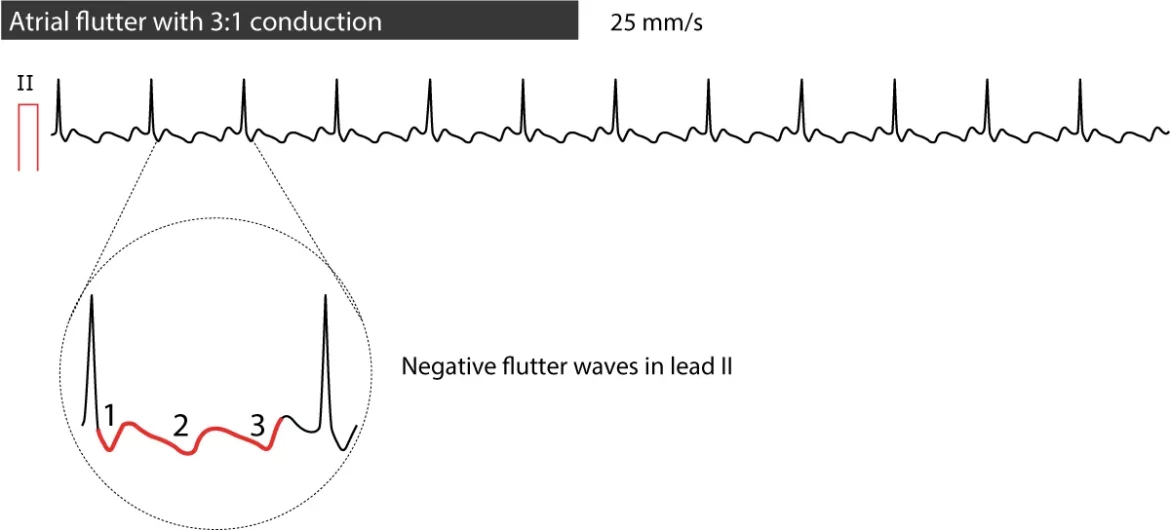Arrhythmias are irregular heartbeats that can occur due to various reasons, including heart disease, electrolyte imbalances, and other medical conditions. These irregularities can affect the heart’s ability to pump blood effectively, leading to potential complications. Understanding the types of arrhythmias is crucial for diagnosis, treatment, and management. In this article, we will explore the three main types of arrhythmias: atrial fibrillation, ventricular tachycardia, and atrial flutter.
What Are The 3 Types of Arrhythmias?
1. Atrial Fibrillation (AFib):
Atrial fibrillation is one of the most common types of arrhythmias, characterized by rapid and irregular heartbeats originating in the heart’s upper chambers (atria). Instead of contracting normally to pump blood, the atria fibrillate or quiver, causing an erratic heartbeat.
AFib can lead to blood clots, stroke, heart failure, and other complications if not managed properly.
Symptoms of AFib may include palpitations, fatigue, shortness of breath, dizziness, and chest discomfort. However, some individuals with AFib may not experience any noticeable symptoms, making it essential to diagnose through electrocardiogram (ECG) and other cardiac tests.
Treatment for atrial fibrillation aims to restore normal heart rhythm and reduce the risk of complications. This may include medications to control heart rate and rhythm, blood thinners to prevent clot formation, cardioversion to restore normal rhythm, and lifestyle modifications such as a healthy diet, regular exercise, and avoiding triggers like excessive alcohol consumption and smoking.
see also: 7 Drugs to Treat Premature Ventricular Contractions
2. Ventricular Tachycardia (VT):
Ventricular tachycardia is a rapid heartbeat originating in the heart’s lower chambers (ventricles). Unlike AFib, which involves irregular atrial contractions, VT is characterized by a fast and regular ventricular rhythm, often exceeding 100 beats per minute.
VT can be life-threatening, especially if it persists or degenerates into ventricular fibrillation. Symptoms of ventricular tachycardia may include palpitations, dizziness, lightheadedness, chest pain, shortness of breath, and fainting. In some cases, VT can lead to sudden cardiac arrest if not promptly treated.
Treatment for ventricular tachycardia depends on the underlying cause and severity of symptoms. Options may include antiarrhythmic medications, implantable cardioverter-defibrillator (ICD) placement to deliver electric shocks if needed, catheter ablation to eliminate abnormal heart tissue causing the arrhythmia, and lifestyle changes to reduce risk factors such as high blood pressure and coronary artery disease.
3. Atrial Flutter:
Atrial flutter is a type of arrhythmia characterized by a rapid and regular heartbeat originating in the atria. Unlike AFib, where the atria fibrillate, in atrial flutter, the atria contract rapidly but in a regular pattern, often at rates between 250 to 350 beats per minute.
Symptoms of atrial flutter may include palpitations, fatigue, shortness of breath, chest discomfort, and dizziness. Some individuals with atrial flutter may also develop complications such as stroke or heart failure if left untreated.
Treatment for atrial flutter aims to restore normal heart rhythm and reduce the risk of complications. This may involve medications to control heart rate and rhythm, cardioversion to convert the abnormal rhythm to normal, catheter ablation to eliminate the flutter circuit, and lifestyle modifications to manage underlying conditions contributing to the arrhythmia.
Conclution
In conclusion, arrhythmias are a diverse group of heart rhythm disorders that can significantly impact cardiovascular health.
Understanding the three main types of arrhythmias—atrial fibrillation, ventricular tachycardia, and atrial flutter—is crucial for effective diagnosis, treatment, and management to improve patient outcomes and reduce the risk of complications associated with these conditions.
FAQs
What are the 4 fatal arrhythmias?
The four fatal arrhythmias are ventricular fibrillation (VF), ventricular tachycardia (VT) leading to ventricular fibrillation, asystole (flatlining), and pulseless electrical activity (PEA). These arrhythmias can result in sudden cardiac arrest and require immediate medical attention.
What are the two most common arrhythmias?
The two most common arrhythmias are atrial fibrillation (AFib) and ventricular tachycardia (VT). AFib is prevalent among adults, especially the elderly, and VT can occur in individuals with heart disease or structural heart abnormalities.
What is the most harmless arrhythmia?
Sinus arrhythmia is often considered the most harmless arrhythmia. It is a variation in the heart’s rhythm caused by changes in breathing and is commonly seen in healthy individuals, especially during deep breathing or relaxation.
Why do people get arrhythmia?
People can get arrhythmias due to various factors, including heart disease, electrolyte imbalances, medications, stimulant use (such as caffeine or nicotine), stress, excessive alcohol consumption, genetics, and structural abnormalities in the heart’s electrical system. Certain medical conditions like hypertension, diabetes, and thyroid disorders can also contribute to arrhythmias.


